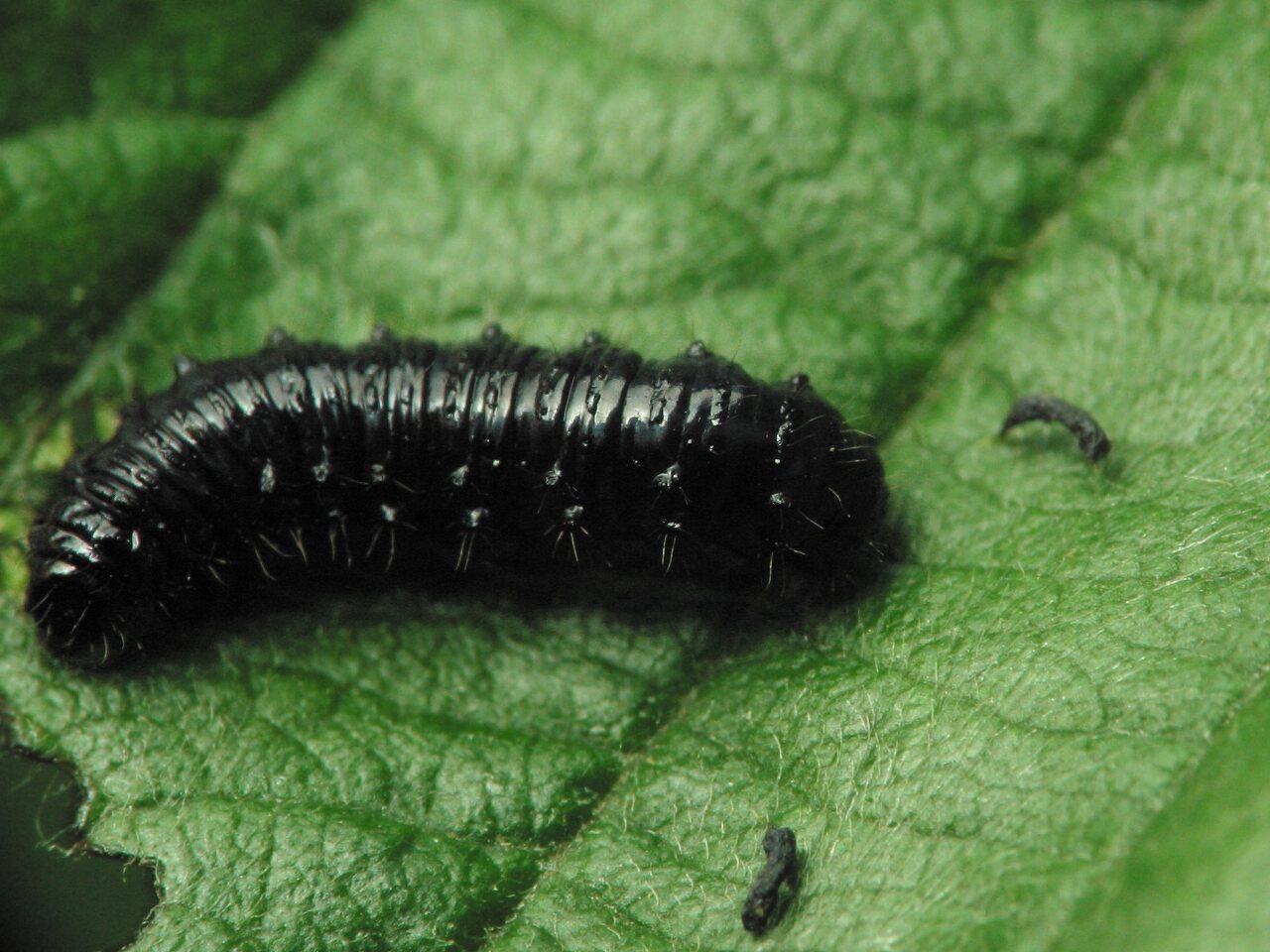
Agelastica alni larva · mėlynasis alksniagraužis, lerva
- alder leaf beetle
- Erlenblattkäfer, Blaue Erlenblattkäfer
- mėlynasis alksniagraužis
- alkšņu zilais lapgrauzis
- hurmak olchowiec, hurmak olszowy
ukbeetles.co.uk/agelastica-alni This widespread and locally common species occurs throughout Europe north to the UK and Fennoscandia, it is also present on most of the Mediterranean islands and extends east through Asia Minor, Russia, Ukraine and northern Kazakhstan into Siberia and is now established in the United States and Canada.
Adults are present almost year-round and are active over a long season from early spring until June or July and the next generation from July until the autumn although they may overlap, the usual host plants are common alder (Alnus glutinosa) and grey alder (A. incana), other broadleaf trees such as birch, hazel, willow and hornbeam only very occasionally host the species and in southern Europe they sometimes feed on the foliage of various fruit trees.
They spend the winter among leaf-litter or moss close to host plants and emerge from late March or early April, maturation feeding begins immediately and they seek out freshly opening alder buds but if these are not available they will consume other foliage for a while, mating begins in April and females oviposit during May and June. Females attach groups of eggs to the underside of host foliage, usually between 50 and 70 eggs in each batch and each will lay between 200 and 250.
Larvae emerge 10-12 days later, they pass through 3 instars and are fully grown within 25-30 days; they feed communally but in the last instar disperse throughout the host plant, they are very distinctive and easily recognized; elongate and pale grey when small and shiny black as final instars, and during June they may be present with adults as well as batches of the bright-yellow eggs. Full grown larvae drop to the ground and construct elongate earthen cocoons just below the surface in which they pupate although they sometimes pupate among litter etc. and adults emerge after about three weeks over a long season from July to September. New-generation adults usually emerge and feed and so at this time foliage can become extensively damaged but early adults usually enter moss or litter and undergo a summer diapause in response to higher temperatures. Eggs and larvae may occur over a long season as development is strongly influenced by food supply and temperature, and in good years adults may appear in abundance. They are likely to occur wherever the hosts are abundant, usually in wetland marginal situations but also in permanently damp woodland etc.
Paplitęs Europoje (išskyrus tundrą ir stepių zonos pietinę dalį), Kazachijoje; įvežtas į Šiaurės Ameriką. Kūnas 6–8 mm ilgio, tamsiai mėlynas. Lerva 12 mm ilgio, verpstiška, juoda, blizganti. Vabalai ir lervos apgraužia alksnių, rečiau beržų, gluosnių lapus ir ūglius. Lėliukėmis virsta žemėje. Dažnas medynų pakraščiuose, pakelėse, aikštelėse. Vabalai žiemoja miško paklotėje. Gegužės mėnesį ant lapų apačios krūvelėmis deda geltonus kiaušinius. Per metus užauga 1 karta.
‥
0 comments
Add a comment